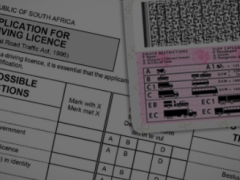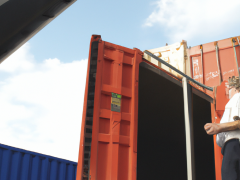There are five cases for the use of artificial intelligence that rail operators can implement to elevate asset performance, writes Johann Schachtner of SAP.
Railway operators have heard the buzz about how artificial intelligence can transform their business, by enriching the customer experience or making significant operational improvements.
Now, as the hype surrounding AI yields to competitive realities, it’s time for them to hold AI to the same standard as they do other technologies, where it must demonstrate its value in real-life, rail-specific use cases. In short, AI better show it can deliver a solid return on investment.
As rail operators learn more about, and gain experience with, business AI, that value proposition is coming into focus. In what types of use cases is business AI likeliest to bring rail companies the most value?
We asked that question during a series of in-depth interviews late last year with high-level, technology-focused railway execs, and there was a clear consensus (as detailed in a recently released SAP white paper) that AI likely will bring massive improvements in critical areas related to rail asset management. Here’s a handful of AI use cases that today show great potential to move the needle for rail operators:
1. Collect and maintain a comprehensive central repository of asset information. Keeping your railway asset register accurate and up to date becomes much more manageable with AI. AI can play a significant role in asset register management, especially during architectural transitions and data-format transformations. AI-assisted master data tagging can automatically tag the relevant business data to 3D visual models.
AI can also help rail operators collect, standardise and organise information and documentation about assets (installation and maintenance manuals, for example) from manufacturers, vendors and others within their business ecosystem. A generative AI (genAI) digital assistant can, with the right prompts, tap into the data repository to assemble and deliver specific information and insight about an asset in real time.
2. Manage asset performance to optimise life cycle value. The safety, efficiency and overall performance of a railway system depends largely on how well the operator manages its assets. Here’s another area where AI is proving its value to railway operators, enabling them to thoroughly evaluate asset performance and strategically prioritise and schedule maintenance efforts by using embedded, AI-enabled models. AI can perform risk and criticality analyses, provide predictive insights for reliability-centered maintenance, and perform failure mode and effects analyses, effectively closing the loop between maintenance strategy and execution to ensure alignment and optimisation throughout the asset life cycle.
AI can also enable railway operators to make the leap from preventive to prescriptive maintenance, where it doesn’t just predict when an asset is likely to need maintenance, it prescribes exactly the maintenance steps to take with that asset.
3. Generate dynamic maintenance demand based on AI-driven visual asset inspection. With AI-based visual inspection capabilities, operators can proactively identify potential issues and predict maintenance requirements more accurately, enabling them to shift from fixed preventative maintenance to dynamic, condition-based, predictive and prescriptive maintenance strategies.
Advanced image analysis techniques coupled with AI can forecast and recommend maintenance actions. Some of the execs we interviewed flagged this use case as a good entry point for organisations to gain experience and comfort with AI.
In the case of one railway operator, it has been using AI-based visual inspection capabilities to move from time-based to condition-based maintenance with the pantographs it employs on its rolling stock. AI analyses camera images of the pantographs, assesses their remaining useful life and recommends which to prioritise for maintenance. The result: reduced out-of-service time for rolling stock.
4. Streamline maintenance planning, approval, and orchestration. AI can help rail operators streamline maintenance processes and optimise resource allocation by consolidating all work types into a single backlog and coordinating smoothly across supply chain, procurement and finance operations. On the inventory front, AI also can help optimise the availability of necessary components and materials. What’s more, as demand for inspections, overhauls and replacements grows, AI can provide insight to optimise short-, medium- and long-term maintenance planning and dispatching to increase asset uptime.
5. Excel at maintenance execution. AI tools can support mobile execution of maintenance activities by ensuring that field technicians have all the information they need in the moment to complete work orders efficiently and effectively, and by relieving them of certain documentation tasks associated with the work they perform. This not only leads to better maintenance outcomes, it facilitates institutional knowledge capture and transfer.
Meanwhile, augmented reality (AR) and virtual reality (VR) capabilities powered by AI are showing great promise for their ability to help maintenance teams understand the nature of faults and how they should be addressed.
As intriguing as these use cases sound, they stand a much better chance of succeeding when a few critical building blocks for AI are in place. Among your first order of business is to ensure the data that’s intended to feed your AI models is fresh, reliable, comprehensive, accessible and standardised wherever possible. Conducting thorough due diligence, first to identify the AI use cases that are likely to deliver the most value to your business and customers, then to find the technology partners that can provide you with the business AI capabilities to bring those use cases to life, is another critical step. Keep in mind, the more scalable and adaptable an AI solution is, the lower the marginal cost associated with your AI investment will be.
As you lay the groundwork for AI, you also need to consider and address the risks associated with the technology, putting in place processes and systems to audit your AI models, ensure people get adequate training in how to use the technology, reinforce ethical behavior around its use, and ensure your AI systems and data are well protected from cyber-attacks.
Once these boxes are checked, you’re ready to unleash the power of AI inside your business. As many of the rail companies I work with have discovered, it’s wise to start small with a proof-of-concept project or two to gauge how AI performs in a relatively narrow use case. Then, based on that evaluation, decide whether and how to iterate and scale into other areas of your operation. The possibilities are as limitless as AI technology itself.











